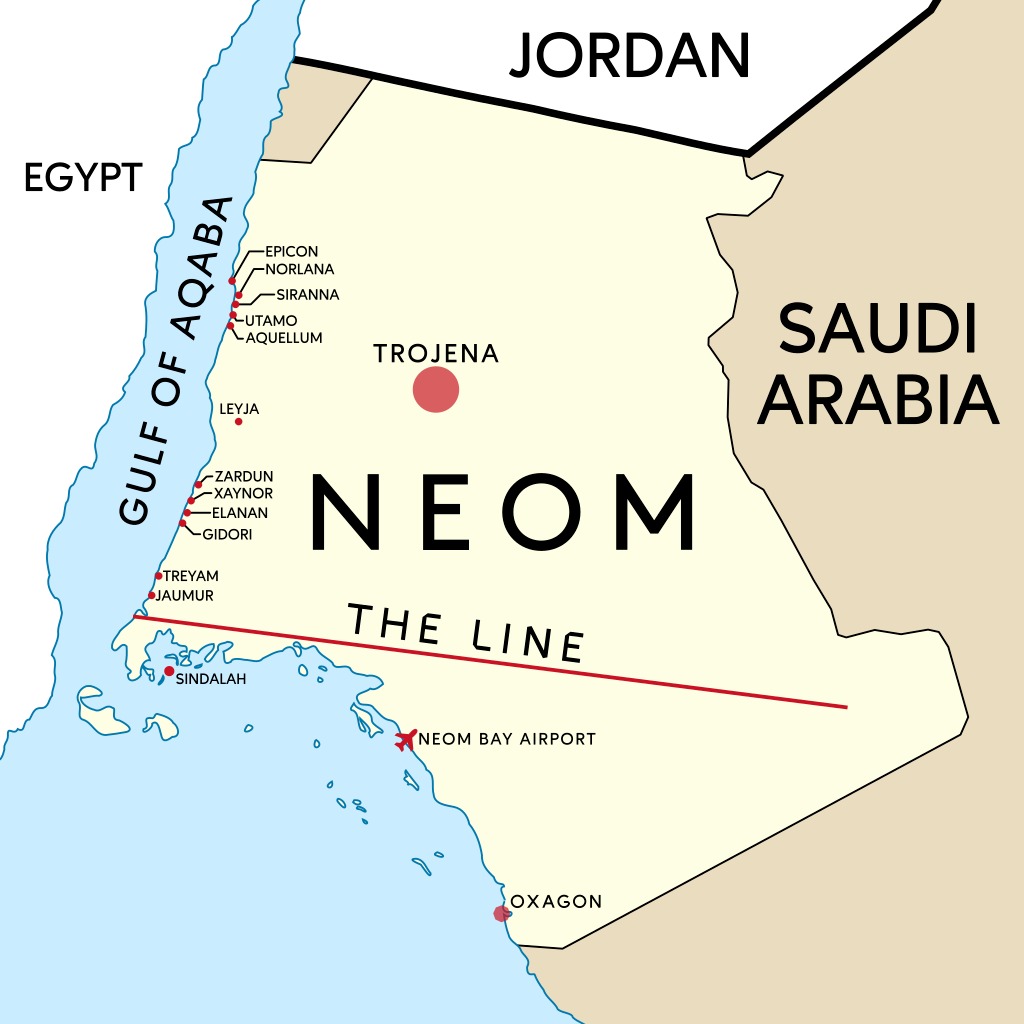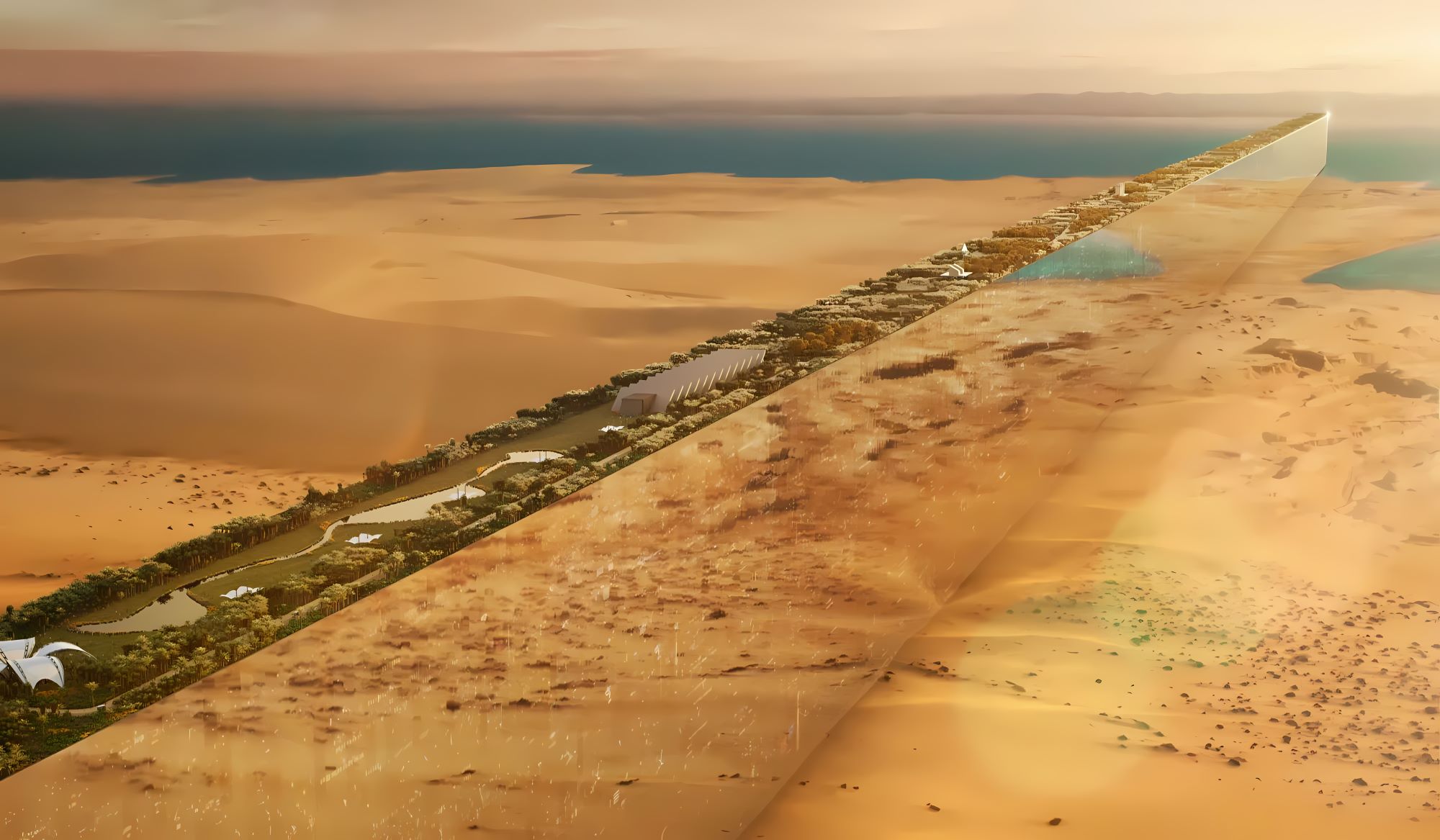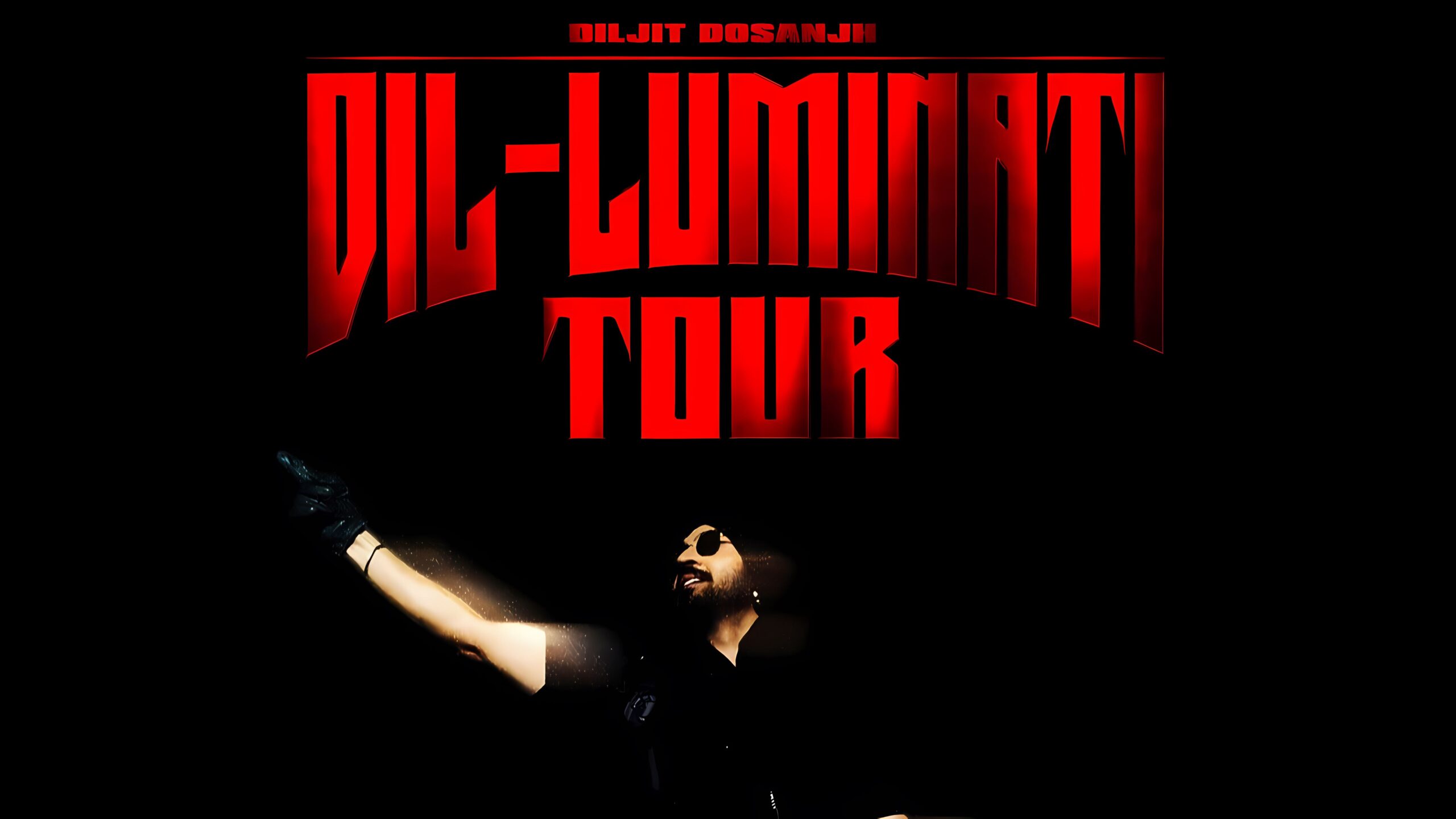Table of Contents
ToggleIntroduction
Saudi Arabia, a nation synonymous with vast deserts and immense oil wealth, is embarking on a visionary project that could redefine urban living: Neom. This ambitious initiative aims to construct futuristic cities that not only symbolize technological advancements but also sustainable living. One of the most talked-about components of Neom is “The Line,” a linear city designed to house millions without the conventional infrastructure of roads and cars. But as grand as these plans are, the question remains: Will Saudi Arabia succeed in building these futuristic cities?
The Vision of Neom
What is Neom?
Neom is an amalgamation of “Neo,” meaning new in Greek, and “Mustaqbal,” which means future in Arabic. This initiative is a part of Saudi Arabia’s Vision 2030, a strategic framework to diversify its economy away from oil dependency and towards sectors like tourism, entertainment, and technology. Neom, covering an area of 26,500 square kilometers in northwestern Saudi Arabia, is envisioned to be a hub of innovation, sustainability, and futuristic living.
The Line: A Revolutionary Concept
At the heart of Neom is The Line, a city that promises to revolutionize urban design. Imagine a 170-kilometer-long city without roads, cars, or emissions, where everything you need is within a five-minute walk. The city’s design focuses on vertical layering of spaces, integrating residential, commercial, and recreational areas into a single, linear structure. High-speed transit systems will enable residents to travel from one end of the city to the other in just 20 minutes, emphasizing convenience and efficiency.
Why Saudi Arabia is Pushing for Neom
Economic Diversification
Saudi Arabia’s heavy reliance on oil has historically made its economy vulnerable to global oil price fluctuations. As the world gradually shifts towards renewable energy, the Kingdom recognizes the urgent need to diversify its economic base. Neom represents a bold step in this direction, aiming to boost non-oil sectors like technology, tourism, and sustainable development.

Vision 2030
Launched in 2016, Vision 2030 is Saudi Arabia’s blueprint for reducing its dependence on oil, increasing public sector efficiency, and fostering economic diversification. Neom is a cornerstone project under this vision, embodying the futuristic, sustainable, and diversified economy that Saudi Arabia aims to achieve by 2030.
The Financial Aspect
Funding Challenges
The primary funding source for Neom is Saudi Arabia’s Public Investment Fund (PIF), which has made significant investments globally, from Uber to the Heathrow Airport. However, the PIF’s recent performance has raised concerns. As of September 2023, Saudi Arabia’s cash reserves fell to $15 billion, the lowest since 2020, indicating potential financial strain. To keep Neom on track, the government must inject at least $270 billion into the PIF by 2030, a daunting financial commitment.
Economic Risks
Past experiences with economic diversification projects, like the King Abdullah Financial District (KAFD) and the King Abdullah Economic City (KAEC), have shown that such grand plans can encounter significant delays and budget overruns. These historical precedents cast doubt on whether Neom can avoid similar pitfalls, especially given the current economic uncertainties and funding challenges.
Technological and Logistical Challenges
Construction and Infrastructure
Building a city like The Line requires cutting-edge technology and innovative construction methods. The envisioned vertical city structure, high-speed transit systems, and sustainable energy solutions pose significant engineering challenges. Moreover, the vast scale of Neom necessitates meticulous planning and coordination, which can be hampered by unforeseen logistical issues.
Environmental Concerns
Neom’s ambitious design includes features like a 500-meter-tall mirrored facade for The Line, which has raised environmental concerns. Critics argue that such structures could disrupt local wildlife, particularly migratory birds. Addressing these environmental impacts while maintaining the project’s futuristic vision will be crucial for Neom’s success.
Human Rights and Social Issues
Forced Evictions and Human Rights Violations
One of the most contentious issues surrounding Neom is the alleged human rights violations. Reports suggest that entire villages have been demolished to make way for the project, with residents forcibly evicted. These actions have drawn international condemnation and raised ethical questions about the project’s human cost.
Labor Practices
Saudi Arabia’s history of labor practices, particularly regarding migrant workers, adds another layer of complexity. Ensuring fair labor conditions and addressing international concerns about workers’ rights will be vital for maintaining global support and attracting skilled labor necessary for the project’s completion.
Geopolitical and Security Concerns
Regional Stability
Neom’s strategic location near the Red Sea and the Suez Canal presents both opportunities and risks. The region has been a hotspot for geopolitical tensions, including conflicts involving Yemen-based Houthi rebels. Ensuring the security of Neom amidst such instability is a significant challenge that could impact the project’s timeline and attractiveness to investors.
International Relations
Saudi Arabia’s diplomatic relationships play a crucial role in the success of Neom. Balancing its ambitious projects with international expectations on human rights and environmental sustainability will be critical. The Kingdom must navigate complex geopolitical landscapes to secure the necessary international support and investment.
The Future of Tourism in Saudi Arabia
Attractions and Innovations
Neom is set to feature a myriad of attractions, from glow-in-the-dark beaches to robotic dinosaurs and flying taxis. These innovations aim to position Saudi Arabia as a premier tourist destination, drawing visitors from around the world. The success of these attractions will depend on their execution and global appeal.
Competing with Established Destinations
Saudi Arabia faces stiff competition from established tourist hubs like Dubai. To attract visitors, Neom must offer unique experiences and ensure that its infrastructure, safety, and hospitality standards meet or exceed those of its competitors.
The Role of Sustainability
Zero Carbon Emissions
Neom’s commitment to sustainability includes zero carbon emissions and the use of desalinated water. Achieving these goals requires substantial investments in renewable energy technologies and sustainable infrastructure. The project’s success will be a litmus test for large-scale sustainable urban development.
Global Impact
If successful, Neom could serve as a model for future cities worldwide, showcasing how urban environments can be designed to minimize environmental impact while maximizing quality of life. This potential global influence underscores the importance of getting every aspect of Neom right.
Conclusion
Saudi Arabia’s ambition to build futuristic cities like Neom is a bold step towards economic diversification and sustainable development. However, the project faces significant challenges, including funding constraints, environmental concerns, human rights issues, and geopolitical risks. While the vision of Neom is undoubtedly revolutionary, its success will depend on overcoming these hurdles and effectively executing its grand plans. Only time will tell if Saudi Arabia can transform its visionary dream into a tangible reality that sets a new standard for future urban living.













+ There are no comments
Add yours